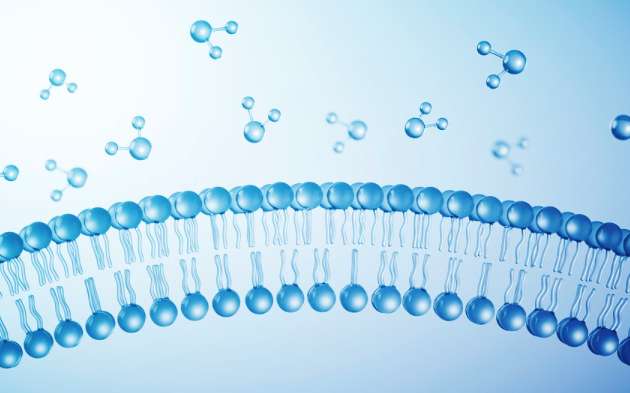In vitro metabolic stability studies have been widely used in drug discovery to determine chemical sequences, guide structural modifications, understand drug structure-activity relationships, predict in vivo clearance, establish in vitro-in vivo correlations (IVIVC), and predict appropriate dosages for human dosing. With the implementation of effective drug design strategies, medicinal chemists have successfully optimized the structure to efficiently block the metabolic site, resulting in an increasing number of compounds that exhibit low clearance 1-3. These molecules are referred to as slowly metabolized compounds (also known as low-clearance compounds) which need prolonged incubation periods and robust enzyme activity systems in in vitro studies, making in vitro research extremely challenging. To address this challenge, this article establishes relevant in vitro study models and provides appropriate model selection methods based on the characteristics of slowly metabolized compounds or the research objectives.
In vitro metabolic stability study models
Liver microsomes and suspension hepatocytes are the most commonly used models for studying metabolic stability in vitro. The advantages of liver microsomes include their abundance of metabolic enzymes (especially cytochrome P450 enzymes), sample operation, and relatively low cost. Suspension hepatocytes are also frequently employed in drug discovery and development due to their more comprehensive drug-metabolizing enzyme system and cofactors, allowing for different metabolic clearance pathway studies. In addition to CYP450 enzymes, hepatocytes also contain non-CYP enzymes, including glucuronosyltransferase (UGT) and aldehyde oxidase (AO).
Since drug-metabolizing enzyme activity decreases with increasing in vitro incubation time, liver microsomes are usually incubated for up to 1 h, and suspension hepatocytes are incubated for up to 4 h in in vitro studies. Such incubation time is not sufficient to detect metabolic reactions of slowly metabolized compounds, thus traditional in vitro metabolism study models have limitations in predicting the clearance rate of these compounds and their metabolites 4. It is necessary to establish methods for extending the incubation time while maintaining the system enzyme activities.
Current primary research methods for slowly metabolized compounds 3-7 are as follows:
Plated hepatocyte incubation method: The incubation time can be extended up to 48 h, and even up to 1 week with normal enzyme activity by adding HepExtend culture factor.
Suspension hepatocyte relay method: The incubation time can be extended up to 20 h or more using suspension hepatocytes.
Hepatocyte and stromal cell co-incubation system: The incubation time can be extended up to 72 h based on two currently well-established and commercial models: HμREL and HepatoPac.
HepaRG Incubation System: Using human hepatocellular carcinoma cell lines, the incubation time can be extended to 24 h.

Figure 1. Primary research methods for slowly metabolized compounds
Among those four methods, the plated hepatocyte method offers the advantage of intact transporter expression, while the suspension hepatocyte relay method provides flexibility in species selection. Both methods exhibit good in vitro-in vivo correlation (IVIVC) and are easily accessible. This article prioritizes providing detailed descriptions of these two approaches.
Hepatocyte metabolic stability study methods
Hepatocyte metabolic stability study procedure:
Cell resuscitation: Cryopreserved hepatocytes were removed from liquid nitrogen and thawed in a 37 °C water bath. After gentle centrifugation, pelleted cells were collected.
Cell counting: Add the cells to the incubation medium and dilute them to the appropriate concentration, which is followed by cell counting.
Cell plating: Diluted hepatocyte suspension was added to a corresponding cell incubation plate.
Incubation: After adding the compound working solution, incubation was initiated at different time points. After the incubation was completed, a stop solution was added to terminate the reaction, followed by centrifuging and collecting the supernatant for LC-MS/MS detection.

Figure 2. Hepatocyte metabolic stability process
Validation of plated hepatocyte method
Hepatocyte culture methods
a. Monolayer culture: Hepatocytes were seeded on collagen-coated cell plates, forming a collagen-hepatocyte-medium monolayer model.
b. "Sandwich" culture 8: Hepatocytes were seeded onto collagen-coated plates. After adhesion, a layer of matrigel was added to form a three-layer model of collagen–hepatocyte–matrigel, with hepatocytes in the middle layer. This model is referred to as the "sandwich" model.

Figure 3. Hepatocyte culture method
Validation of an incubation system using plated hepatocytes 4, 8, 9
a. Selection of commercial slowly metabolized compounds
The following five slowly metabolized compounds were selected for validation and their metabolic enzymes include CYP450, UGT, and MAO. Among them, atorvastatin is the substrate of the transporter OATP1B1.
Compound Name | Metabolic Enzyme |
Atorvastatin | CYP3A, UGT |
Mephenytoin | CYP2C19 |
Timolol | CYP2D6 |
Zolmitriptan | CYP1A2, MAO |
Theophylline | CYP1A2 |
Table 1. Selection of slowly metabolized compounds and their metabolic enzymes
b. Study results
- Clearance
Accurate clearance results of 3 slowly metabolizing compounds (Timolol, Mephenytoin, and Atorvastatin) were obtained, while those of the other 2 compounds (Zolmitriptan and Theophylline) were unable to be obtained due to their lower clearance.
Compound Name | CLint (liver) (mL/min/kg) |
Atorvastatin | 4.5 |
Mephenytoin | 3.8 |
Timolol | 1.1 |
Zolmitriptan | <0.4 |
Theophylline | <0.4 |
Table 2. Intrinsic hepatic clearance of slowly metabolized compounds
- Ln remaining-time curves of the compounds in hepatocytes are shown below.

Figure 4. Ln remaining-time curves of the compounds in hepatocyte
The plated hepatocyte incubation method can achieve accurate clearance results for slowly metabolized compounds. However, due to the limitations of their enzyme activity, the maximum incubation time is 48 hours. For compounds with even slower metabolism and lower clearance rates, accurate clearance rate data cannot be obtained.
Suspension hepatocyte relay method 3
Study principles and protocol
Enzyme activity of suspended hepatocytes can be maintained for 4 h. The incubation mixture is centrifuged at the end of the 4-h incubation in this model, and the supernatant is then collected and frozen until the next incubation. The supernatant is thawed at the beginning of the next incubation, and freshly resuscitated cryopreserved hepatocytes are continuously added. This technique facilitates the evaluation of slowly metabolized compounds throughout up to 20 h. Because freshly hepatocyte suspension is used every 4 h, the cells maintain their metabolic capacity throughout the entire study process.

Figure 5. Transfer process of the suspension hepatocyte relay method
After reviving cryopreserved suspended hepatocytes, trypan blue staining is used to determine cell quantity and cell viability. The diluted hepatocyte suspension is then added to a cell culture plate at each time point, and the incubation is performed by adding the diluted compound working solution.
Results
(1) Clearance
Accurate clearance values for all five slowly metabolized compounds were obtained, with mean clearance values of Timolol, Zolmitriptan, and Theophylline consistent with the literature (less than 1.5-fold difference).
Compound Name | CLint (liver) (mL/min/kg) | |
WuXi AppTec value | Literature value | |
Atorvastatin | 14.7 | - |
Mephenytoin | 12.3 | - |
Timolol | 9.7 | 14.0 |
Zolmitriptan | 2.6 | 3.5 |
Theophylline | 2.7 | 2.8 |
Table 3. Intrinsic hepatic clearance of slowly metabolized compounds
(2) Ln remaining-time curves of the compounds in hepatocytes are shown below.

Figure 6. Ln remaining-time curves of the compounds in hepatocytes
Accurate clearance values of five slowly metabolized compounds were obtained using this suspension hepatocyte relay method. In addition, the choice of hepatocyte species in the suspended hepatocyte model can be flexible.
By comparing the clearance rates of five slowly metabolized compounds, it can be observed that the metabolism of five slowly metabolized compounds in plated hepatocyte culture systems is slower than in suspended hepatocytes. The main reasons include: (1) Compared to plated hepatocytes, suspended hepatocytes have incomplete expression of efflux transporters, and (2) the rotational speed of suspension hepatocytes is higher during incubation, resulting in an increased contact area between the compounds and the cells, allowing the compounds to enter the cells more quickly.
Practical application of slowly metabolized compound metabolic stability study research models
If a compound does not show significant metabolism in metabolic stability studies on liver microsomes and suspension hepatocytes, with a remaining close to 100% at the longest incubation time point. For accurately calculating the clearance value of such compounds, two metabolism models, including the plated hepatocytes culture method and the suspension hepatocyte relay method, can be employed. An appropriate model can be selected according to the characteristics of these two methods: (1) To evaluate the impact of transporters on metabolism, the plated hepatocytes culture method can be prioritized to evaluate the impact of transporters on metabolism, as it exhibits relatively complete transporter expression; (2) To assess metabolism differences between various species, the suspension hepatocyte relay method is preferred, due to availability of various suspension hepatocyte.
 Figure 7. Application of the slowly metabolized compound study model
Figure 7. Application of the slowly metabolized compound study model
Conclusion
By applying the two in vitro metabolic stability study models established by WuXi AppTec DMPK, more accurate in vitro clearance data of slowly metabolized compounds can be obtained, which can further predict in vivo clearance and guide clinical dosage and dosing frequency. We will consistently investigate other research methods on slowly metabolized compounds, including the co-culture method and other models. Despite significant advancements in in vitro metabolism research methods and technologies in recent years, further research is still needed to improve the accuracy of inferring in vivo situations from in vitro data. We will continue to focus on new research on in vitro metabolic methods and explore additional models to facilitate drug development.
Click here to learn more about the strategies for slowly metabolized compounds, or talk to a WuXi AppTec expert today to get the support you need to achieve your drug development goals.
Authors: Haijuan Liu, Xiangling Wang, and Genfu Chen
Committed to accelerating drug discovery and development, we offer a full range of discovery screening, preclinical development, clinical drug metabolism, and pharmacokinetic (DMPK) platforms and services. With research facilities in the United States (New Jersey) and China (Shanghai, Suzhou, Nanjing and Nantong), 1,000+ scientists and over fifteen years of experience in Investigational New Drug (IND) application, our DMPK team at WuXi AppTec are serving 1,500+ global clients, and have successfully supported 1,200+ IND applications.
Reference
[1] Obach RS, Curr Top Med Chem,2011; 11:334–339.
[2] N. BLANCHARD1, Xenobiotica, 2005; 35(1): 1–15
[3] Li Di, Patrick Trapa, DMD 2012; 40:1860–1865
[4] J. Matthew Hutzler, DMD 2015; 43:1917–1928
[5] Britta Bonn, DMD 2016; 44, 527-533
[6] Paul Lancett, DMD, 2018, 46:1169–1178
[7] ISSX 2019 poster hurel-coculture-low-clearance-model
[8] YAU YI LAU, DMD 30:1446–1454, 2002
[9] Cornelia M. Smith, J Pharm Sci 2012; 101, 3989–4002
Stay Connected
Keep up with the latest news and insights.













